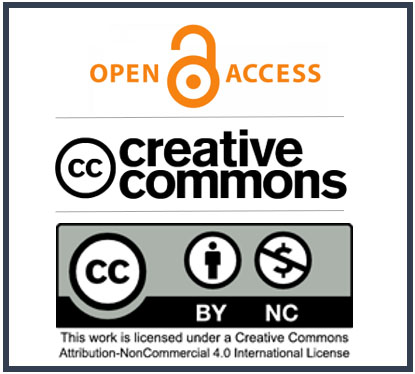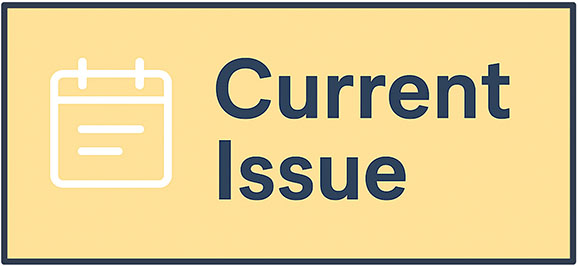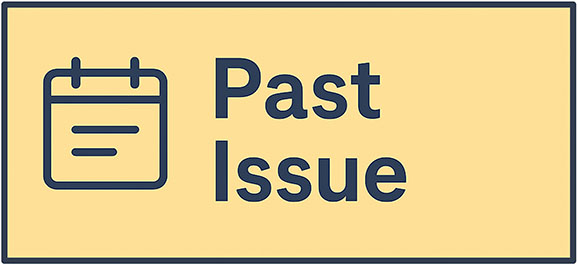Submissions
Submission Preparation Checklist
As part of the submission process, authors are required to check off their submission's compliance with all of the following items, and submissions may be returned to authors that do not adhere to these guidelines.- The submission has not been previously published, nor is it before another journal for consideration (or an explanation has been provided in Comments to the Editor).
- Declarations Form was provided
- The structured abstract was added to the main text for original articles
- A clinical significance sentence that is concise, with a limit of 40 words, was added after the abstract
- Three to five keywords were added
- The abstract word limit is proper with the limitation of the journal (Original article: 250, Review article: 250, case report: 200, case series: 200, letter to the editor: -)
- The manuscript word limit is proper (without abstract and references) with the limitation of the journal (Original article: 4000, Review article: 5000, case report: 1500, case series: 3500, letter to the editor: 500)
- The reference limit is proper with the limitation of the journal (Original article: 40, Review article: no limit, case report: 30, case series: 30, letter to the editor: 5)
- The table+figure limit proper with the limitation of the journal (Original article: 8, Review article: 8, case report: 5, case series: 10, letter to the editor: 0)
- Arabic superscript numerals after the point was used in the main text as a citation.
- The tables were added in the main-text after the references.
-
The figures were uploaded separately (with high quality) and also embedded in the main text after the references.
Author Guidelines
Introduction
Journal of Endodontics and Restorative Dentistry (J Endod Restor Dent) is a highly respected scientific journal that caters to the needs of those interested in the fields of endodontics and restorative dentistry. This online-only journal follows a rigorous and independent peer-review process, ensuring that all articles are unbiased and of the highest quality. The double-blinded approach employed by Journal of Endodontics and Restorative Dentistry further strengthens its credibility, making it a trusted source of information for researchers, practitioners, and students alike. With its biannual release schedule, readers can look forward to two new issues each year, in April and September. Overall, Journal of Endodontics and Restorative Dentistry is a valuable resource for anyone seeking to stay up-to-date on the latest developments in these important areas of dental science.
Journal of Endodontics and Restorative Dentistry provides extensive coverage of both clinical and experimental studies on all aspects of endodontics and restorative dentistry. Notably, the journal features original articles, reviews on current topics, case reports, editorial comments, and letters to the editor that follow ethical guidelines. It is important to note that the journal is published solely in English, ensuring it maintains a global reach and fosters international collaboration within the field.
The journal's editorial and publication processes are meticulously designed to meet the highest standards of integrity and quality. To ensure this, the journal adheres to the guidelines set by several reputable organizations such as the International Committee of Medical Journal Editors (ICMJE), World Association of Medical Editors (WAME), Council of Science Editors (CSE), Committee on Publication Ethics (COPE), European Association of Science Editors (EASE), and National Information Standards Organization (NISO). Furthermore, the journal is committed to upholding the Principles of Transparency and Best Practice in Scholarly Publishing, which have been laid out by the Directory of Open Access Journals (DOAJ) at doaj.org/bestpractice.
Ethics in publishing
In order to maintain high standards of ethical research practices, it is imperative that the Ethics Committee thoroughly reviews and approves all experimental, clinical, drug studies, and some case reports. To facilitate this process, authors may be requested to submit ethics committee reports or official documents in accordance with international agreements (World Medical Association Declaration of Helsinki “Ethical Principles for Medical Research Involving Human Subjects,” amended in October 2013, www.wma.net). In instances where the research involves human subjects, written informed consent must be obtained from patients and volunteers, accompanied by a detailed explanation of the procedures they will undergo. Moreover, studies conducted on animals must clearly state the measures taken to prevent pain and suffering. It is essential that the Materials and Methods section of the manuscript includes relevant information pertaining to patient consent, the name of the ethics committee, and its approval number. Additionally, authors must make every effort to protect patients' anonymity, and obtain signed consent forms for any photographs that may reveal their identity. These rigorous protocols are put in place to ensure that the research is conducted in a safe and ethical manner, and that the rights of human and animal subjects are protected at all times.
Declarations
All corresponding authors must complete the unified EndoRes Declarations Form (https://endoresto.com/endores_declarations.html) before manuscript submission.
This single online form consolidates all mandatory author statements required for publication, ensuring full transparency and compliance with international standards.
The form includes the following sections:
- Manuscript & Authors
Enter the manuscript title, article type, and complete author information, including affiliations, ORCID IDs, and corresponding author designation.
- CRediT Author Contributions
Define the specific contribution of each author using the CRediT (Contributor Roles Taxonomy).
Each author must have at least one role selected (e.g., Conceptualization, Methodology, Writing – Original Draft).
This statement will appear in the published article above the Acknowledgments section.
- Conflict of Interest
Each author must declare potential conflicts of interest according to ICMJE recommendations
(www.icmje.org).
If “Yes” is selected, details of financial relationships, consulting, or material support must be specified.
- Ethics, Data, and AI Declarations
Indicate whether ethics approval was obtained, data availability conditions, and any use of AI-assisted tools (e.g., for editing or analysis). AI usage must be transparently described with the model name and purpose (e.g., “ChatGPT-5 for language editing”).
- Funding
Disclose all funding sources and grant numbers, or confirm that no external funding was received.
- Acknowledgments
Optionally mention individuals or organizations who contributed to the work but do not meet authorship criteria.
- Copyright Agreement
Authors confirm originality, ownership, and publication under the CC BY-NC 4.0 license.
All co-authors must electronically approve the terms by typing their names and checking “I agree.”
No handwritten signature is required.
Note:
- All information is stored locally in your browser and exported only as PDF or JSON.
- The completed and electronically signed form should be uploaded during manuscript submission.
- No wet signature or physical copy is required.
Manuscript Preparation
To ensure proper formatting and publication, it is important for authors to prepare their manuscripts in accordance with the ICMJE-Recommendations for the Conduct, Reporting, Editing, and Publication of Scholarly Work in Medical Journals (updated in December 2016 - http://www.icmje.org/icmje-recommendations.pdf). Depending on the type of research, manuscripts should be prepared following the appropriate guidelines, such as CONSORT for randomized studies, STROBE for observational research, STARD for diagnostic accuracy studies, PRISMA for systematic reviews and meta-analysis, ARRIVE for animal studies, and TREND for non-randomized public behavior.
Title Page
A separate title page is no longer required.
All information previously included in the title page — such as the manuscript title, short title, author names, affiliations, corresponding author details, funding information, and acknowledgments — is now collected through the unified EndoRes Declarations Form (https://endoresto.com/endores_declarations.html).
Abstract
When submitting any work except for Letters to the Editor, please include an abstract. For Original Articles, the abstract should have subheadings for Objective, Methods, Results, and Conclusion. Please refer to Table 1 for the word count guidelines.
Keywords
When submitting an abstract, it is essential to include three to five keywords at the end of the text for accurate subject indexing. To ensure the proper selection of keywords, it is recommended to write them out in full without any abbreviations. The best source for selecting these keywords is the National Library of Medicine's Medical Subject Headings database, which is available at https://www.nlm.nih.gov/mesh/MBrowser.html. It is important to note that the keywords selected should accurately reflect the content of the abstract to facilitate proper categorization and retrieval by search engines.
Clinical Significance Sentence
When writing a research article, it is important to include a section that discusses the clinical significance of the study. This section should outline how the findings of the study can be applied in a real-world setting, regardless of the size or scope of the study itself. By doing so, readers will have a better understanding of the practical implications of the research and how it can contribute to improving patient outcomes and advancing the field as a whole. Authors should provide a clinical significance sentence that is concise, with a limit of 40 words.
Manuscript Types
Original Articles: In the realm of academic writing, original articles are considered the most vital type of article as they offer new information that is based on research. It is crucial to structure the main text of original articles with subheadings such as Introduction, Methods, Results, Discussion, and Conclusion to ensure clarity. Meta-analyses will be considered as an original articles. Please refer to Table 1 for the limitations that apply to Original Articles.
Statistical analysis is usually necessary to support conclusions, and it must be conducted in accordance with international statistical reporting standards (Altman DG, Gore SM, Gardner MJ, Pocock SJ. Statistical guidelines for contributors to medical journals. Br Med J 1983: 7; 1489-93). The information on statistical analyses should be provided with a separate subheading under the Method section, and the statistical software used in the process must be specified. It is essential to use the International System of Units (SI) when presenting units. This system ensures consistency and clarity in scientific communication.
Review Articles: We cordially invite authors with a wealth of knowledge and scientific expertise in a specific field, demonstrated by their numerous highly cited publications, to submit review articles for consideration. In fact, the journal may extend invitations to such authors. These review articles should present a comprehensive description, discussion, and evaluation of the current status of knowledge on a particular topic in clinical practice and provide guidance for future research. The main body of the article should include an introduction, clinical and research implications, and a conclusion. For details on the limitations of review articles, please refer to Table 1.
Case reports, Case Series: The journal has limited space for case reports and only accepts those that cover rare cases or conditions that pose challenges in diagnosis and treatment. Additionally, case reports that offer new therapies or reveal knowledge not found in existing literature, as well as those that are interesting and educational, are considered for publication. The text should have subheadings for Introduction, Case Presentation, Discussion, and Conclusion. Please refer to Table 1 for the restrictions on Case Reports.
Letters to Editor: If you feel that a previously published article requires further elaboration or if you wish to discuss topics related to the journal's scope that may be of interest to readers, we suggest that you submit a "Letter to the Editor." This type of manuscript is an effective way to highlight aspects of the article that may have been overlooked or inadequately addressed. Moreover, it provides readers with an opportunity to share their comments on published manuscripts in a structured manner. Please ensure that your letter is devoid of any abstracts, keywords, or media, and that you cite the manuscript you are commenting on appropriately. We encourage you to keep the text unstructured and easy to read so that it can be published in the journal without any issues.
|
Table 1. Manuscript limitations |
||||
|
Manuscript Type |
Word limit |
Abstract word limit |
Reference limit |
Table/Figure limit |
|
Original Article |
4000 |
250 |
40 |
Total of 8 |
|
Review Article |
5000 |
250 |
no limit |
Total of 8 |
|
Case Report |
2500 |
200 |
30 |
Total of 5 |
|
Case Series |
4000 |
200 |
30 |
Total of 10 |
|
Letter to the Editor |
500 |
No abstract |
5 |
No table or figure |
Tables
When incorporating tables into a document, they should be placed after the reference list and be numbered consecutively based on their order of mention in the text. A title that describes the content of the table should be positioned above it. Abbreviations used in the table should be defined in footnotes below the table, even if previously defined in the text. To ensure easy reading, tables should be created using the "insert table" command in a word processing software and arranged clearly. Data in the table should not repeat that mentioned in the main text, but rather support it.
Figures
To ensure smooth processing of your submission, kindly submit any figures, graphics, or photographs as separate files in either TIFF or JPEG format through the submission system. Please also embed these files in the main text after the references. If there are figure subunits, kindly submit each subunit separately through the submission system and avoid merging them to form a single image. It is also important to avoid labelling images (a, b, c, etc.) to indicate figure subunits. Instead, thick and thin arrows, arrowheads, stars, asterisks, and similar marks can be used to support figure legends. Like the rest of the submission, the figures should be blind, and any information that may indicate an individual or institution should be blinded as well. To ensure a smooth evaluation process, submitted figures must have a minimum resolution of 300 DPI and should be clear in resolution and large in size (minimum dimensions: 100 × 100 mm). Lastly, figure legends should be listed at the end of the main document.
References
When citing publications, it's essential to prioritize the latest and most current publications. If you're citing an ahead-of-print publication, it's necessary to provide the DOI number. As an author, it's your responsibility to ensure the accuracy of your references. Journal titles should be abbreviated based on the journal abbreviations in Index Medicus/MEDLINE/PubMed. If there are six or fewer authors, list them all. If there are seven or more authors, list the first six authors followed by "et al.". When citing references, it's important to number them consecutively based on their appearance. When citing within the text, use Arabic superscript numerals after the point in consecutive order.
Journal article:
Author. Title. Journal. Year|;Volume|(Issue)|:Pages|.
Galler K, Krastl G, Simon S, et al. European Society of Endodontology position statement: Revitalization procedures. Int Endod J. 2016;49(8):717-723.
Ahead of Print Articles:
Author. Title. Journal. Year|; [ahead of print]
Galler K, Krastl G, Simon S, et al. European Society of Endodontology position statement: Revitalization procedures; [ahead of print]
Book Section:
Author. Title. In:| Editor, ed.^eds.| Translator, trans.| Book Title.| Vol Volume.| Edition ed.| Place Published|: Publisher; Year|:Pages|.
Suh K, Keystone J. Malaria and babesiosis. In: Gorbach SL BJ, Blacklow NR, ed. Infectious Diseases. 3th ed.: Philadelphia: Lippincott Williams; 2004:2290-2308.
Book:
Author. Title. Vol Volume|. Edition ed|. Place Published|: Publisher; Year|.
Sakaguchi R, Powers J. Craig's restorative dental materials. 13th ed. United States: Elsevier; 2012.
Conference Proceedings:
Author. Title. `Paper presented at:` Conference Name|; Date, Year of Conference|; Conference Location|.
Kimura J SH. Recent advances in clinical neurophysiology. Paper presented at: Proceedings of the 10th International Congress of EMG and Clinical Neurophysiology; Oct 15-19, 1995; Kyoto, Japan.
Thesis:
Author. Title [Thesis Type]|. Place Published|: Academic Department|, University; Year|.
Zeigler C. Associations between obesity, periodontal inflammation, subgingival microflora and salivary flow rate [Thesis for doctoral degree]. Stockholm: Dept of Dental Medicine, Karolinska Institutet; 2015.
Web Page:
Author. Title. Year;| Available at: URL|. Accessed Access Date|, Access Year|.
Van Rhee HJ, Suurmond, R., & Hak, T. User manual for Meta-Essentials: Workbooks for meta-analysis (Version 1.0). 2015; Available at: www.erim.eur.nl/research-support/meta-essentials. Accessed October 14, 2019.
Other important issues
All acronyms and abbreviations used in the manuscript must be defined at their first use, both in the abstract and main text. The abbreviation should be enclosed in parentheses following the definition.
When mentioning a drug, product, hardware, or software program in the main text, it's essential to provide product information, including the product name, producer, city, and country of the company.
All references, tables, and figures should be sequentially numbered in the order they are referred to within the main text and must be mentioned in the text.
It's crucial to mention the limitations, drawbacks, and shortcomings of original articles in the Discussion section before the conclusion paragraph.
Please ensure to use British English spelling and terminology in the manuscript.
Publication Charge
There are no charges associated with the submission of articles to this particular journal. Rest assured, your work will be evaluated on its merit alone, and you will not be required to pay any charges or fees for the submission process. We believe in providing equal opportunities for all and fostering an inclusive community of authors, regardless of financial background.
Privacy Statement
The names and email addresses entered in this journal site will be used exclusively for the stated purposes of this journal and will not be made available for any other purpose or to any other party.








